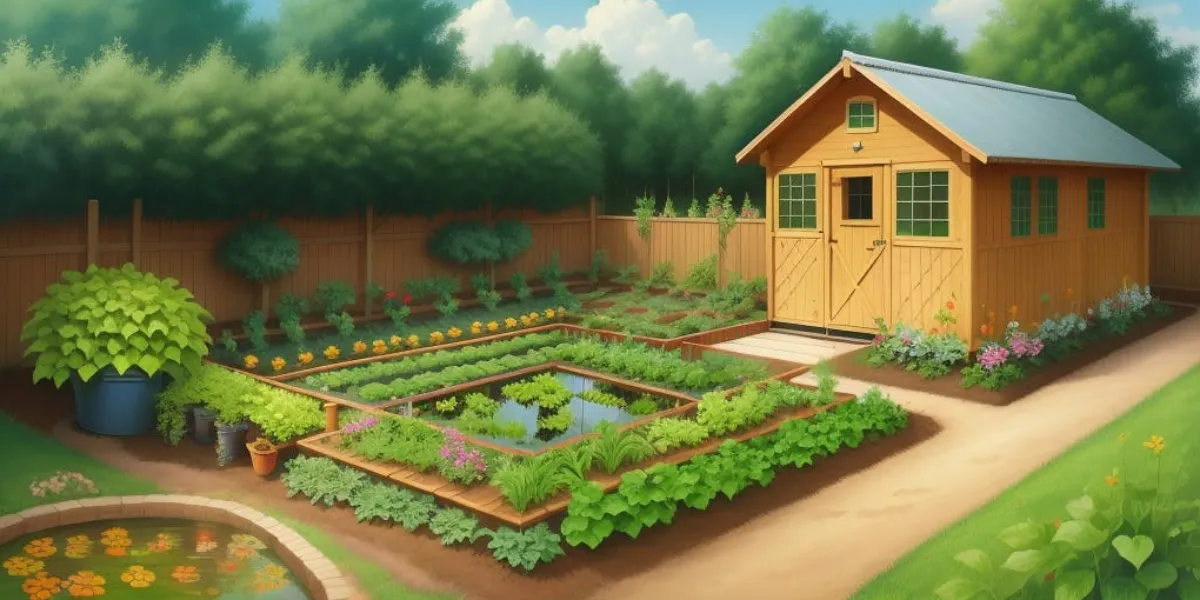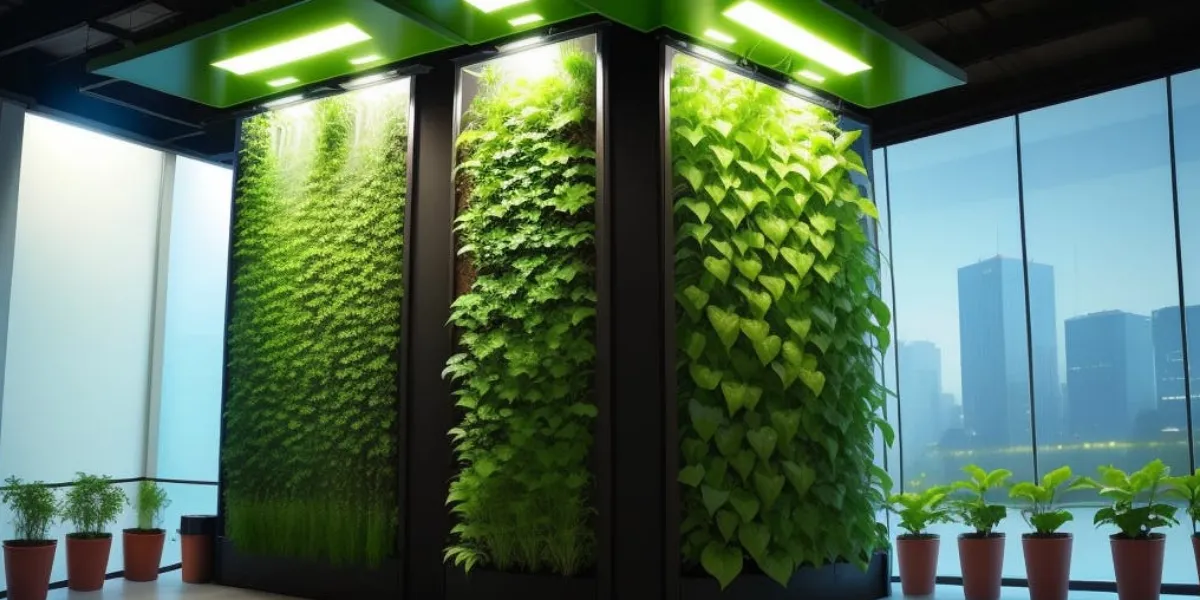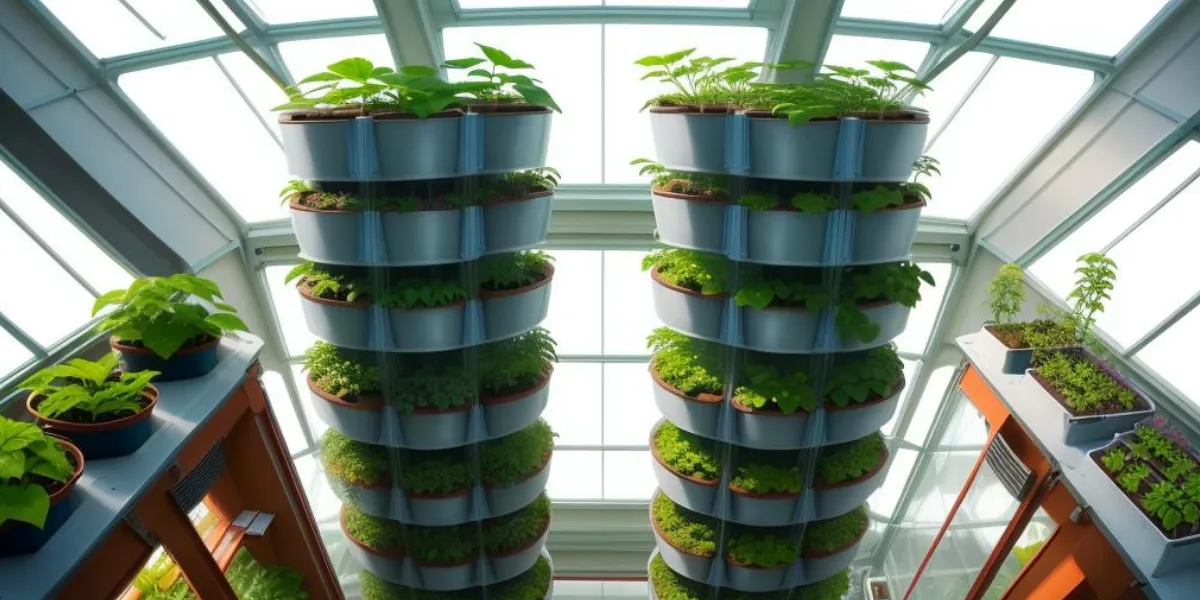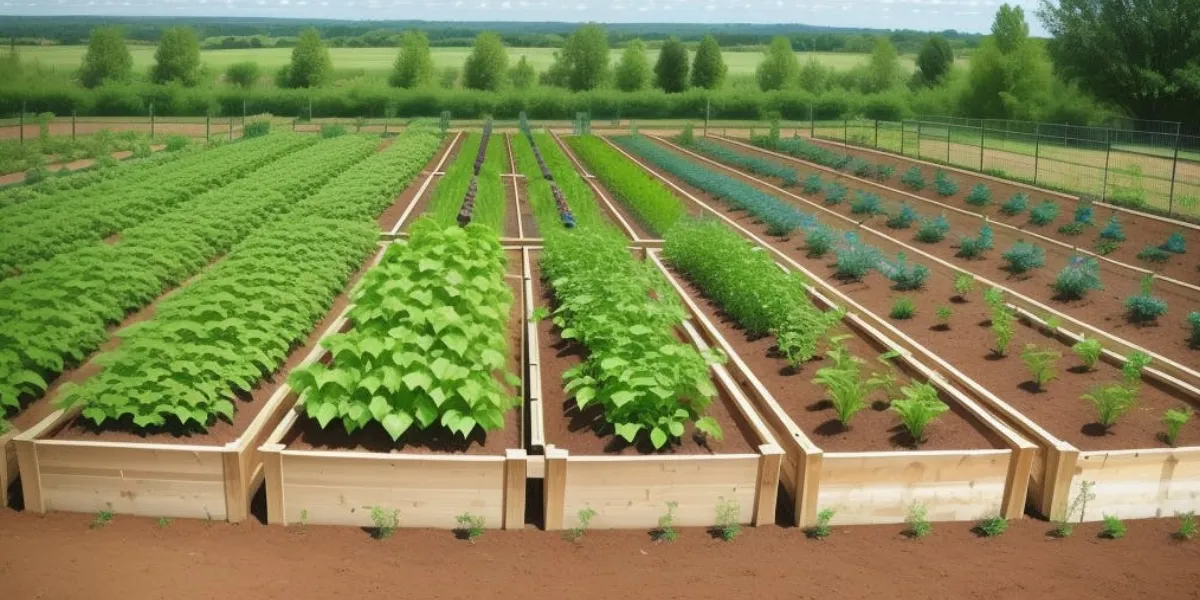
Unearthed: Innovative Sustainable Agriculture Techniques For Preppers
Imagine your hands deep in fertile soil, planting seeds that’ll ensure your survival. You’re not just growing plants; you’re cultivating resilience with cutting-edge sustainable agriculture techniques. As a prepper, you seek liberation from reliance on fragile food systems. This article explores permaculture principles, aquaponics and hydroponics for emergencies, space-saving vertical farms, bio-intensive gardening, and the art of seed saving and crop rotation. This article is your ticket to innovative farming methods that will leave you prepared and self-sufficient. You’ll master methods that secure your food independence, come what may.
Key Summaries
Permaculture principles and techniques can enhance resilience and productivity in sustainable agriculture; they mimic natural ecosystems and uses organic farming techniques.
Aquaponics combines fish farming with hydroponics to create a nutrient-rich cycle and ensure a consistent food supply; it integrates aquaculture and horticulture, conserves water, maximizes space, and offers natural pest control.
Vertical farming maximizes space efficiency and allows for year-round cultivation of diverse crops; it reduces the need for pesticides and herbicides and is ideal for preppers with limited land.
Bio-intensive gardening tactics such as companion planting and cover cropping maximize yield in minimal space and enhance soil health.
Permaculture Principles for Survival
Incorporating the twelve core permaculture principles can significantly enhance your homestead’s resilience and productivity. By adopting a framework that emphasizes sustainable and self-perpetuating systems, you’re not just preparing for survival; you’re advancing a lifestyle of autonomous abundance.
Permaculture’s approach to edible landscapes exemplifies this. You can transform your surroundings into a food-producing haven by designing gardens that mimic the balance and diversity of natural ecosystems. This technique not only provides nourishment but also reinforces local biodiversity and soil health, crucial for long-term sustenance.
One key aspect of permaculture design is the use of polycultures. This involves planting a variety of crops that support each other. The benefits of this approach are twofold: it increases productivity and reduces the risk of pests and diseases. Permaculture also emphasizes the significance of soil health. Practices like composting, mulching, and cover cropping are used to improve soil fertility, water retention, and overall ecosystem resilience.
Another key principle of permaculture is the idea of closed-loop systems. This means minimizing waste and maximizing resource efficiency. One example of this is incorporating animals into the farming system. Their manure can be used as a natural fertilizer, reducing the need for chemical inputs. Water management is also a crucial component of permaculture. Techniques such as rainwater harvesting and swales are employed to effectively conserve and utilize water resources.
The principle of holistic grazing integrates livestock into land management strategies, optimizing animal movements to mimic wild herds. This process naturally aerates the soil, distributes seeds, and cycles nutrients, effectively turning your animals into partners in land regeneration. It’s a sophisticated method that moves beyond mere survival; it’s about co-creating a thriving ecosystem where every element supports the other.
Embracing these principles equips you with the knowledge to exploit natural patterns and cycles, turning them to your advantage. It’s a conscious and strategic move toward self-sufficiency, ensuring that you’re not only surviving but truly thriving within your liberated space, regardless of external uncertainties.

Hydroponics: Growing Food Without Soil
Start growing food without soil by exploring the innovative technique of hydroponics. Hydroponics is a method of growing plants in a nutrient-rich water solution, without the need for traditional soil. This indoor farming technique has gained popularity in urban gardening due to its efficiency, space-saving nature, and ability to produce high yields.
In hydroponics, plants are grown in a controlled environment where the nutrients and water are carefully regulated. This allows for optimal growth and eliminates the risk of pests and diseases that are commonly associated with traditional soil-based farming. Additionally, hydroponics uses significantly less water compared to conventional agriculture, making it a more sustainable and eco-friendly option.
One of the main advantages of hydroponics is its ability to be adapted to various settings and crops. From leafy greens and herbs to fruits and vegetables, a wide range of plants can thrive in a hydroponic system. This flexibility makes it an ideal solution for urban areas with limited space and access to fertile soil.
Hydroponics offers the advantage of year-round cultivation. By providing plants with the ideal conditions for growth, such as proper lighting and temperature control, crops can be harvested consistently throughout the year. This allows for a more reliable and consistent food supply, free from the constraints of seasonal changes and weather fluctuations.
To give you a clear understanding of the benefits of hydroponics, here is a table outlining some key advantages:
| Advantages of Hydroponics | Explanation |
|---|---|
| 1. Efficient water usage | Hydroponics uses up to 90% less water compared to traditional soil-based farming. This is crucial in regions experiencing water scarcity. |
| 2. Faster growth rate | Without the limitations of soil, plants in hydroponic systems can absorb nutrients more efficiently, resulting in faster growth and higher yields. |
| 3. Year-round cultivation | With hydroponics, you can create a controlled environment suitable for growing crops throughout the year, regardless of the external climate. |
Hydroponics presents a promising solution for growing food without soil, offering numerous benefits such as increased efficiency, space optimization, reduced water usage, and year-round cultivation. As the world faces challenges related to food security and sustainability, hydroponics provides an innovative approach to meet the growing demand for fresh, nutritious, and locally grown produce.
Aquaponics in Emergency Preparedness
Aquaponics is a system that combines fish farming with hydroponics. Aquaponics ensures a dependable food supply so is perfect for preparing for emergencies. This technique not only liberates you from traditional agricultural constraints but also offers resilience in times of crisis.
The system utilizes the waste produced by fish to fertilize the plants, while the plants filter and purify the water for the fish. This closed-loop system requires less space, water, and energy compared to traditional farming methods, making it suitable for both urban and rural settings. By implementing aquaponics in emergency preparedness plans, individuals and communities can ensure a continuous supply of fresh food even in challenging circumstances.
Aquaponics systems can be easily scaled up or down to meet the needs of different populations, making them a versatile and adaptable solution for emergency preparedness efforts. Integrating aquaponics systems into emergency preparedness plans can enhance resilience, food security, and self-reliance in the face of unexpected events.
Analyzing the benefits:
Nutrient-Rich Cycle: Aquaponics creates a symbiotic environment where fish waste provides nutrients for plant growth, which in turn purifies the water for the fish. This closed-loop system minimizes the need for external inputs, making it a robust option for self-sufficiency.
Aquaponic Scalability: Your system can be tailored to the space you have, from a small indoor unit to a larger outdoor setup. This flexibility allows you to scale up operations to match your needs and available resources, ensuring an emergency fishery that can adapt to the demands of different scenarios.
Water Efficiency: Consuming approximately 90% less water than conventional farming, aquaponics is particularly valuable where water is scarce. This efficiency is crucial in emergency situations where water supply may be compromised.
Year-Round Harvest: With controlled environments, you’re not at the mercy of seasons. You can produce food throughout the year, which is essential for consistent supply during extended periods of uncertainty.
Aquaponics stands as an innovative and technical solution that aligns with the desire for liberation from unreliable food systems, particularly in emergencies.

Vertical Farming for Space Efficiency
You’ll maximize your growing area with vertical farming, stacking crops in layers to exploit vertical space efficiently. This method represents a shift in sustainable agriculture, where traditional horizontal space restrictions no longer bind you. By orienting growth upward within structures like urban skyscrapers or through rooftop conversions, you leverage limited space, an essential strategy in densely populated areas where ground-level acreage is scarce or prohibitively expensive.
Vertical farming isn’t merely about piling plants on shelves; it’s a sophisticated operation that requires precise control over environmental factors, including lighting, temperature, and humidity. With hydroponic or aeroponic systems, you can deliver water and nutrients directly to the roots, reducing waste and increasing growth efficiency. These closed-loop systems also minimize the need for soil, which is advantageous in urban contexts where clean, arable land may be unavailable.
Many urban areas have unused rooftop spaces that can be transformed into productive gardens. These rooftops provide ample sunlight and can be converted into green spaces for growing a variety of crops. By utilizing these otherwise wasted spaces, rooftop farming allows for increased food production in urban environments. Additionally, vertical farming reduces the need for pesticides and herbicides since plants are grown in a controlled environment, minimizing the risk of pests and diseases
Implementing vertical farming as part of your self-sufficiency plan enables you to cultivate a diverse array of crops year-round, independent of external supply chains. It’s an assertive step toward food sovereignty, providing a liberating solution to the pressing challenges of food production in space-constrained environments. By embracing vertical farming, you’re not just growing upwards; you’re also taking a proactive stance in securing your nutritional autonomy.

Bio-Intensive Gardening Tactics
Transitioning from the vertical expanse, nearly every inch of your garden’s soil can be optimized with bio-intensive gardening tactics, maximizing yield in minimal space. You’ll find that these methods don’t just ensure survival but also promote a thriving ecosystem right in your backyard.
To practice bio-intensive gardening effectively, consider these critical tactics:
Companion Planting: Strategically pair plants that mutually benefit from each other. This method reduces pests and diseases while boosting plant health. For instance, tomatoes thrive when nestled next to basil, which naturally repels certain insects.
Double-Digging: Increase aeration and root depth by methodically digging two layers of soil. This encourages denser planting, which in turn conserves water and minimizes weeding.
High-Compost Content: Enrich your soil with homemade compost. This not only boosts fertility but also helps maintain soil structure and moisture, leading to resilient crops. This also reuses food waste.
Green Manuring: Integrate cover crops, like clover or alfalfa, into your rotation. These plants fix nitrogen in the soil, reducing the need for synthetic fertilizers and enhancing soil health.
Harness these techniques to create a self-sustaining garden that liberates you from the constraints of conventional agriculture, paving the way for a sustainable and autonomous lifestyle.

Seed Saving and Crop Rotation
After mastering bio-intensive gardening, it’s time to investigate seed saving and crop rotation, essential practices that ensure your garden’s sustainability year after year. Heirloom preservation is a cornerstone of self-reliance, enabling you to maintain a diverse genetic pool that is adaptable to changing conditions. By carefully selecting and storing seeds from your most successful plants, you’re not just saving money—you’re also safeguarding the unique flavors and resistances that come with heirloom varieties.
Crop rotation, on the other hand, is a systematic approach to managing your garden’s nutrient cycle and pest control. It’s an informed strategy, requiring an understanding of how different plants interact with the soil and each other. This is where polyculture benefits shine, as diverse plantings can lead to a more resilient ecosystem.
To illustrate, consider this table:
| Year | Crop Rotation |
|---|---|
| 1 | Legumes |
| 2 | Leafy Greens |
| 3 | Heavy Feeders |
| 4 | Root Crops |
Legumes fix nitrogen, preparing the soil for leafy greens, which are light feeders. Heavy feeders, like tomatoes, follow, utilizing the accumulated nutrients. Finally, root crops break up the soil and help control pests, setting the stage for another cycle. This rotation not only liberates your garden from dependency on synthetic inputs but also fosters a robust, interconnected system.
Frequently Asked Questions
What is sustainable agriculture, and why is it essential for preppers?
Sustainable agriculture involves practices that maintain soil health, conserve resources, and minimize environmental impact while ensuring long-term productivity. For preppers, it ensures a reliable, ongoing food source in any situation.
How can vertical farming be implemented in a prepper’s setup for maximum efficiency?
Utilize vertical space by growing plants in stacked layers or vertical towers indoors or in small spaces using controlled environments and LED lighting.
Are there specific crops that are more suitable for sustainable prepping agriculture?
Fast-growing, high-yield crops like leafy greens, herbs, tomatoes, and root vegetables are ideal for sustainable prepping due to their versatility and nutritional value.
What role do permaculture and regenerative farming play in sustainable prepping?
Permaculture and regenerative farming focus on mimicking natural ecosystems, improving soil fertility, and enhancing biodiversity, making them critical for sustained food production.
How can preppers integrate renewable energy sources into their agricultural practices?
Implement solar panels, wind turbines, or hydroelectric systems to power irrigation, heating, or lighting, reducing reliance on traditional energy sources.
Are there ways to conserve water and optimize its use in a prepping agriculture system?
Techniques like drip irrigation, rainwater harvesting, and mulching can significantly reduce water waste and ensure efficient usage.
What are some DIY or low-cost sustainable agriculture solutions for preppers with limited resources?
Examples include building raised beds from reclaimed materials, creating compost from kitchen scraps, or constructing simple rainwater collection systems.
How can preppers manage pests and maintain soil health without relying on conventional chemicals?
Employ natural pest deterrents like companion planting, crop rotation, and using beneficial insects. Maintaining soil health through composting and mulching also minimizes pest issues.
Are there innovative ways to ensure food preservation and storage in a self-sufficient prepping environment?
Methods such as dehydration, canning, fermenting, and root cellaring are effective for preserving surplus produce without relying on refrigeration or electricity.
Conclusion
As you start these sustainable practices, remember: ‘Necessity is the mother of invention.’ By integrating permaculture principles, harnessing aquaponics and hydroponics, maximizing space with vertical farming, adopting bio-intensive methods, and strategically preserving seeds with crop rotation, you’re not just preparing—you’re innovating. These methods will revolutionize your farming practices, enabling you to maximize space, conserve resources, and restore ecosystems. With these techniques in your arsenal, you’ll be prepared for any situation – from everyday sustainability to surviving the apocalypse. Embrace these techniques with a critical eye and a practical hand, ensuring your survival strategy is as resilient as it’s resourceful. Your journey to self-sufficiency is a testament to the power of informed, adaptive agriculture.

